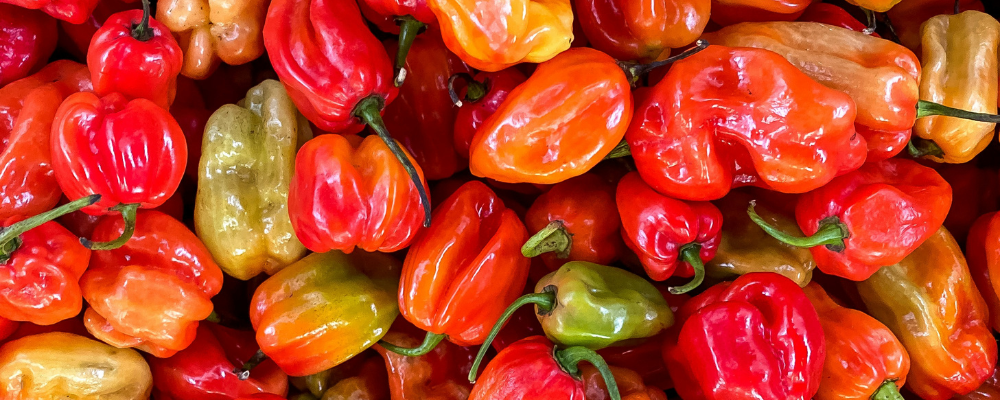
Growing Peppers, Mild to Hot!
— By Kayla Parsons, RDN, PhD Student, University of Maine Cooperative Extension
Peppers are a wonderful flavor booster for any recipe, especially the Homemade Salsa Recipe and Vegetarian Chili that can be found on EFNEP’s recipe website. As the weather starts getting warmer, I love to spend evenings grilling kabobs with green peppers, mushrooms, and red onion (so delicious!). Similar to onions, peppers have different flavor profiles that can add dimension to your dishes. With green peppers providing a light, earthy flavor and jalapenos bringing the heat! Last year, my fiancé and I went on a pepper endeavor, trying to grow the spiciest peppers we could for fun. Little did we know that our palate couldn’t even handle a nibble of this pepper, leaving us trying to pawn off dozens of Carolina Reapers to anyone that would take them. Interested in trying to grow some for yourself? Keep reading to get the inside scoop, from bell peppers to the spiciest peppers across the globe.
Which peppers have the heat?
Peppers get their heat from the odorless chemical compound, capsaicin (pronounced kap-say-sn). Capsaicin can be found in the white part on the inside of peppers which the seeds are attached to (also known as the placenta). Interestingly, the only types of peppers that do not contain capsaicin are bell peppers, putting them at the bottom of the Scoville Scale. The Scoville Scale has been used to determine the strength of the heat from capsaicin of each pepper, as determined by Scoville Heat Units (SHU). The higher amounts of capsaicin levels, the higher the SHU will be. The table below puts into perspective where some of your favorite peppers might land on the scale.
Peppers on the Scoville Heat Scale1
| Scoville Rating | Types of Peppers |
| Mild 0 – 1,999 Scoville Heat Units (SHU) |
Bell peppers, Ancho Poblano, Shishito peppers, Cherry peppers, Anaheim and Golden Greek Pepperoncini |
| Mild Hot 2,000 – 49,999 SHU |
Jalapeno, Cayenne, Serrano, Tabasco, Lemon Drop |
| Hot 50,000 – 99,999 SHU |
Thai chili peppers, Chipotle, Charleston, and Rocoto |
| Spicy Hot 100,000 – 249,999 SHU |
Scotch bonnet, Pimenta de Neyde, Jamaican yellow |
| Very Hot 250,000 – 499,999 SHU |
Habanero, Fatalii yellow, Red Devil’s Tongue |
| Really Hot 500,000 – 999,999 SHU |
7 Pot Yellow, 7 Pot Bubblegum, Red Savina |
| Fiery Hot 1,000,000 – 1,499,999 SHU |
Bhut Jolokia (Ghost pepper), 7 Pot Lucy, Naga Viper, Komodo Dragon |
| Extremely Hot 1,500,000+ SHU |
Carolina Reaper, Trinidad Moruga Scorpion, 7 Pot Dougash |
1: Ratings for each pepper found from Food & Wine
Growing Tips
Looking to spice up your garden this year with something new? Try your hand at growing peppers. Conveniently, whether you’re planting bell peppers or Carolina Reapers, the gardening process is basically the same. Peppers grow best in deep, moderately fertile, well-drained soil. It’s recommended to begin planting your seeds indoors during March and April to avoid any risk of frost. Peppers love the heat and need at least 6-8 hours of sunlight per day. Some find it easier to protect against environmental barriers by growing peppers in 5 gallon buckets.
For more information about growing peppers, check out Maine Home Garden New’s Growing Peppers, Mild and Hot. Share this article with your favorite gardener!
